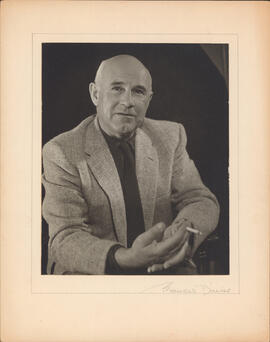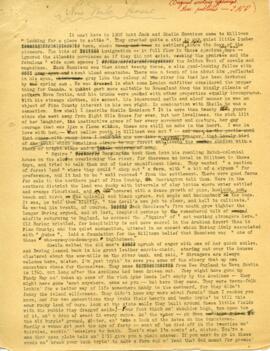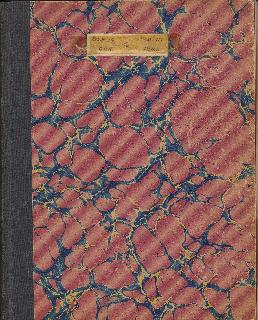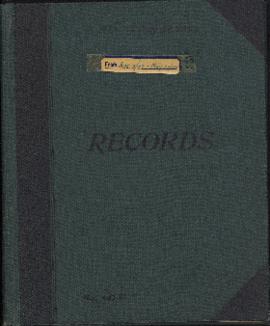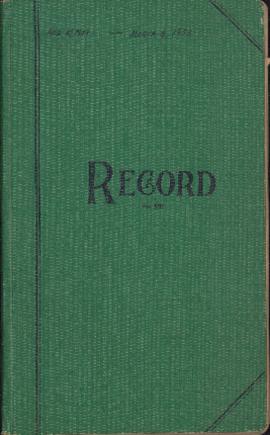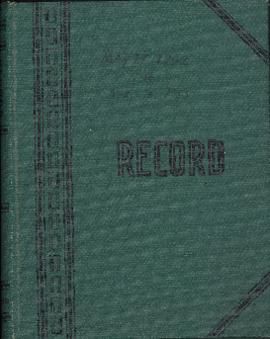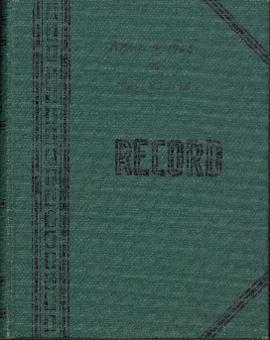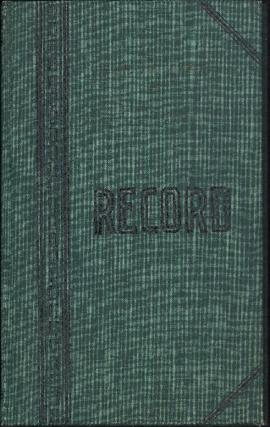Title and statement of responsibility area
Title proper
General material designation
- Graphic material
- Textual record
Parallel title
Other title information
Title statements of responsibility
Title notes
Level of description
Repository
Reference code
Edition area
Edition statement
Edition statement of responsibility
Class of material specific details area
Statement of scale (cartographic)
Statement of projection (cartographic)
Statement of coordinates (cartographic)
Statement of scale (architectural)
Issuing jurisdiction and denomination (philatelic)
Dates of creation area
Date(s)
-
Bulk, 1913-1994 (Creation)
-
1870-1995 (Creation)
Physical description area
Physical description
Publisher's series area
Title proper of publisher's series
Parallel titles of publisher's series
Other title information of publisher's series
Statement of responsibility relating to publisher's series
Numbering within publisher's series
Note on publisher's series
Archival description area
Name of creator
Biographical history
Born at Hythe, Kent, on November 13, 1903, Thomas Head Raddall was the son of British Army Officer Thomas Head Raddall and Ellen (née Gifford) Raddall. At the time, the family lived in the married quarters of the School of Musketry where THR's father taught. In 1909 THR's parents enrolled him in St. Leonard's Primary School for boys in Hythe. He continued there until May 1913, when his family moved to Halifax, Nova Scotia, in order for his father to assume a training position in the Canadian Militia. Sixteen months after the family's move, THR's father joined the war effort. Acting Lieutenant-Colonel Raddall, D. S. O., of the Winnipeg Rifles, was killed in action in August 1918 at Amiens.
In Halifax, THR attended Chebucto School. His final year there (Grade 9) was interrupted in December 1917, when the school was turned into a temporary morgue following the devastating Halifax Explosion. The Raddall family survived the explosion, an event which Raddall writes about in his memoirs, In My Time, and also in his history Halifax, Warden of the North.
At the age of fifteen, Raddall trained at the Canadian School of Telegraphy in Halifax and shortly thereafter (having given his age as eighteen) obtained work as a marine telegraph operator for the Marconi Wireless Telegraph Company. In 1919 he was assigned to Partridge Island, New Brunswick; between then and 1922 he worked at various locations in Nova Scotia (Pictou, Sable Island, and Camperdown) as well as on ships—including the War Karma, the Prince George, the Watuka, and the Mackay-Bennett—in the North Atlantic. This period also saw the publication of his first short story, " The Singing Frenchman" ( Sunday Leader, December 1921).
From September 1922 to the spring of 1923, THR undertook accountancy training at the Maritime Business College in Halifax and by April had been hired as a bookkeeper by Macleod Pulp and Paper Company in Milton, Queen's County, Nova Scotia. It was there that he met Edith Margaret Freeman, a music teacher, in 1924; they became engaged in the spring of 1926 and were married on June 9, 1927, in Milton's Baptist Church. A slump in the pulp and paper industry, the subsequent reduction in his salary, as well as a new mortgage prompted THR to look for employment elsewhere. He worked briefly as a clerk in the construction industry before being hired (February 1929) by the Mersey Paper Company in Liverpool, where he resided until his death in 1994.
Still looking for extra income, THR sent Maclean's a short story, " The Three Wise Men," for which he received $60. From this point on, THR made a serious commitment to writing. His new boss at the Mersey Paper Mill encouraged his writing, and over the next few years, THR published Saga of the Rover (1931) and The Markland Sagas (1934). By 1938 THR was earning enough from his writing to support his growing family—his son Tom was born in 1934 and daughter Frances in 1936—that he quit his job at the Mersey Paper Company and took to writing full-time.
Over the next forty years THR published twenty-five books, dozens of articles on a wide variety of subjects, more than seventy short stories, and an autobiography; made radio and television appearances; became increasingly called upon as a guest speaker by various historical and literary societies; and was asked to become Lieutenant-Governor of Nova Scotia (1968), an offer he declined. His first national recognition came in 1944 when The Pied Piper of Dipper Creek and Other Stories received the Governor General's Award for Fiction. He subsequently won the Governor General's Literary Award for Non-fiction in 1948 for Halifax, Warden of the North (1948) and again in 1957 for The Path of Destiny (1957). Some of his best-known works include His Majesty's Yankees (1942), Roger Sudden (1944), The Nymph and the Lamp (1950), The Wings of Night (1956) and The Governor's Lady (1960).
THR was elected a Fellow of the Royal Society of Canada in 1953 and two years later received the Society's Lorne Pierce Medal "for distinguished service to Canadian literature." Also for his commitment and contribution to Canadian literature, THR was made an Officer of the Order of Canada (1971). He received honorary doctorates from Dalhousie (1949), Saint Mary's (1969), University of King's College (Halifax; 1972), and Saint Francis Xavier (1973).
After his death on April 1, 1994, his son donated money to the Queen's County Museum for the purposes of creating a Thomas Raddall Research Centre, and the furnishings of THR's study were moved to the museum to create a replica of his work area. Dalhousie University's Archives and Special Collections are the official repositories of his papers and his library, respectively.
Custodial history
Scope and content
Notes area
Physical condition
Immediate source of acquisition
Arrangement
Language of material
- English






